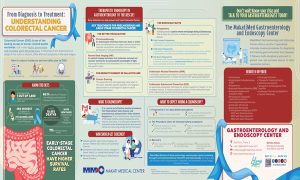With seemingly countless types of known illnesses made even more complex by closely similar symptoms, differentiating one from another can be quite a feat. Such is the case for asthma and Chronic Obstructive Pulmonary Diseases (CODP), two lung conditions that are often confused with each other.
The confusion surrounding asthma and COPD is mostly due to their overlapping clinical features. For instance, both cause abnormal enlargement or swelling of the airways, consequently restricting a person’s breathing.
The National Institutes of Health (NIH) reports that roughly 24 million people in the United States have COPD and one in five Filipinos (14 to 20%) suffer from it, according to the Philippine College of Chest Physicians (PCCP). Plus, there’s the risk for dual diagnosis that asthma sufferers should be wary of. About 40% of individuals with COPD also have asthma, since asthma can be a precursor to developing COPD, especially as the person ages.
However, the distinction primarily falls with the manner of the attack and development of the condition. Below, we’ll get into the nitty-gritty aspects of their differences. But before that, let’s have a more comprehensive discussion on what makes the two conditions similar.
Asthma and COPD: The Similarities
Lung disease is defined as any issue with the lungs that hinders their healthy functioning. It can be categorized into three: airway diseases, lung tissue diseases, and lung circulation diseases. The first similarity of asthma and COPD is that they are both classified as airway diseases, which are problems affecting the tubes that carry gases, including oxygen, into and out of the lungs.
COPD is an overarching term pertaining to progressive respiratory diseases such as chronic bronchitis and emphysema. On the other hand, asthma is a respiratory condition characterized by spasms in the lungs’ bronchi, typically resulting from allergic reactions or hypersensitivity.
COPD and asthma share a number of symptoms, such as shortness of breath, wheezing, chest tightness, and chronic coughing. This being said, it’s important to know the distinguishing features between the two respiratory diseases in order to promote early diagnosis, which is crucial for accurate treatment.
Let’s now tackle how to properly differentiate asthma from COPD.
Age of Onset
When it comes to initial presentation of the health problem, Dr. Neil Schachter, medical director of Mount Sinai Hospital’s respiratory care department confirms that asthma is more prevalent in children. In comparison, COPD is usually diagnosed in adults over 40 years old.
Causes
COPD is caused by consistent, long-term exposure to smoke, such as years of cigarette smoking or working in environments like coal and oil factories. Smoking and smoke itself inflames the lungs, which compels the air sacs and bronchial tubes to over-expand, leaving air to be trapped in the lungs when exhaling.
However, in rare cases—approximately 1% to be precise—COPD can be acquired through a genetic disorder which causes a protein called alpha-1-antitrypsin or (AAt) to decrease significantly. This particular protein is crucial for protecting the lungs and without the required amount, the organs can be easily damaged, even for non-smokers and young children.
As for asthma, the cause hasn’t been clearly identified yet by medical experts, but the development of the condition is usually attributed to combined genetic and environmental factors that differ from patient to patient.
Trigger Points
COPD aggravations are caused largely by the flu, pneumonia, or other respiratory tract infections. It can also worsen through exposure to certain substances and environmental pollutants.
With asthma, the attack is often induced by hypersensitivity, such as reaction to allergens. Common examples include dust mites, fur, pollen, molds, foods, and medications like aspirin and beta blockers. Stress and engagement in strenuous physical activity can also trigger an asthma attack.
Signs and Symptoms
As stated above, COPD and asthma symptoms seem outwardly similar, especially with shortness of breath that happens in both sufferers. Airway hyper-responsiveness or excessive sensitivity of the tubes to substances that are inhaled is a shared feature of asthma and COPD.
Treatment and Management
● Asthma
Asthma can be managed through long-term medication and treatment. One essential step to take when you have asthma is recognizing your triggers so you can avoid them as much as possible.
Accordingly, symptoms can be relieved quickly through bronchodilators, which include inhalers like salbutamol, fluticasone propionate + formoterol fumarate, and oral corticosteroids. Allergy shots can also be administered to combat an allergy attack.
As for medications for long-term control, these include long-acting beta-agonists, inhaled corticosteroids, combination inhalers and theophylline, and leukotriene modifiers. A bronchial thermoplasty can also aid in reducing the tightening of the airways to alleviate an attack.
● COPD
COPD requires long-drawn treatment that controls symptoms to help those afflicted stay active and lead a healthy life. However, since it is progressive, another goal of treatment is to halt or hinder the worsening of the condition.
It’s imperative for an individual with COPD to quit smoking and avoid being exposed to secondhand smoke. Therapy and support groups are also beneficial for those having trouble getting rid of the vice. As for medications, these include bronchodilators, theophylline, inhaled and oral steroids, antibiotics, combination inhalers, and phosphodiesterase-4 inhibitors.
Other typical COPD treatments include lung therapies and rehabilitation programs, exercise training, and counseling. Additionally, surgeries like lung volume reduction surgery, bullectomy, and lung transplant are options for severe cases.
The treatment of lung diseases requires the assistance and guidance of a qualified medical professional. Moreover, accurate diagnosis is essential for proper management of the condition. For more information regarding COPD and asthma, head over the Department of Pulmonary Medicine near you and consult a doctor.











